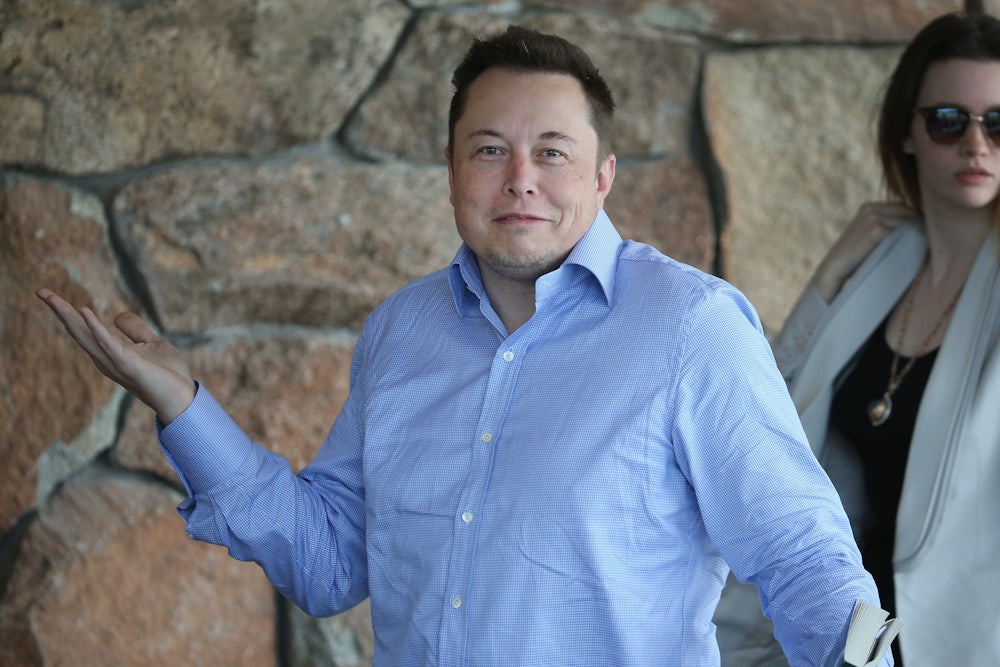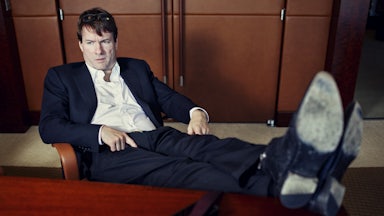It’s a dark day on meme street. Elon Musk, one of Bitcoin’s high priests, seems to have turned against the cryptocurrency, sending its value tumbling more than 10 percent and calling into question an economic model that had depended on the public support of megamoguls to keep crypto prices frothy.
Here’s how the betrayal went down. On Wednesday evening, Musk, who in recent months has been a manic booster of the cryptocurrencies Bitcoin and Dogecoin, tweeted an announcement that Tesla would no longer be accepting Bitcoin for vehicle purchases.
“We are concerned about rapidly increasing use of fossil fuels for Bitcoin mining and transactions, especially coal, which has the worst emissions of any fuel,” wrote Musk. He then praised cryptocurrency as “a good idea on many levels” that needs reform to make it more environmentally sustainable. Tesla, he concluded, was “looking at other cryptocurrencies that use <1% of Bitcoin’s energy/transaction.” About 12 hours later, Musk posted a screenshot of Bitcoin energy usage from the Cambridge Bitcoin Electricity Consumption Index, a widely used tool that tracks Bitcoin’s nation-state-level energy consumption. He called the trend in energy usage “insane.” (Musk’s environmental record—he’s a jet-setting, lithium-mining billionaire who launches cars into space and whose rocket debris is becoming a pain for Texas activists—was always built on hypocrisy.)
This mea culpa represents a dramatic, even bizarre reversal for Musk, who has spent months praising Dogecoin and Bitcoin—he recently bragged that SpaceX is launching a Doge satellite that will orbit the moon—communing with fellow influencers like Jack Dorsey, and generally serving as a hype man for any crypto-infused effort thrown his way. Earlier this year, Tesla purchased $1.5 billion in Bitcoin and promised to allow customers to use the currency to buy cars. But in one brief public statement, Bitcoin lost its most effective, and perhaps most profitable, spokesman. (Musk’s briefly stated interest in finding less energy-intensive currencies may also pose a threat to Bitcoin’s market preeminence.)
Coiners like to say that Bitcoin doesn’t have a marketing department, but that’s not exactly true. Bitcoin has no centralized authority to promote it, but it does have cryptocurrency exchanges, venture capitalists, industry influencers, tech moguls, blockchain startups, sycophantic media outlets, and all sorts of other parties whose moneyed interests lie in boosting the reputation, the ubiquity, and consequently the value of Bitcoin. The hype found its way to mainstream banks like JP Morgan, which projected that the price of Bitcoin might eventually hit $100,000. Despite what its partisans may claim, Bitcoin’s value is largely notional, a shared illusion; to make the number go up, you have to have enough people who believe in it and want it to go up. (In this way, Bitcoin operates based on the same fictions as most markets.)
Bitcoin, though lacking a marketing department, resembles a multilevel marketing scheme. It’s a promise sold to the faithful of great riches if only you invest—and invest again. As with an MLM, coiners recommend addressing adversity—a decline in Bitcoin’s value—by recommitting to the program. “Buy the dip,” goes a common piece of advice, which serves as a half-ironic rallying cry when the market turns bear. (We’ve heard a lot of “buy the dip” in the last 18 hours.)
Driven by celebrity hype, Bitcoin is also an excellent example of the Greater Fool theory, in which to make a profit you simply have to convince the next person to come along that your asset is worth more than what you paid for it. Another term for this might be a confidence game, a grift. Many coiners claim they are “HODLing,” or holding onto Bitcoin for the long term, meaning years or even decades, but treating the asset with this kind of generational reverence is another way of attempting to artificially infuse it with meaning and value. If you project the asset as rising in value into the endless future, then the only risk is not buying in soon enough.
This is why Musk’s about-face is such a threat to the veritable house of cards that’s been built to prop up the Bitcoin cult. If the self-styled environmental savior of the tech world—of our world—can accept what’s been known for years—that Bitcoin is an environmental catastrophe, making it unacceptable for any use—then why don’t the millions of people who praise him as a genius and innovator? Has Elon gone off the deep end, or was it the adoring masses who just days earlier were sending his every utterance viral? (As if to confirm the importance of Musk—and prominent influencers—in the crypto market, the top 10 most traded cryptocurrencies all went into the red after Musk’s tweets.)
There’s no doubt that trading Bitcoin has become tremendously profitable for some—while Musk’s comments sent its value down about 10 percent, it was still priced at around $50,000 the following day. But it’s a specious value that constantly requires rhetorical ballast from its aggressively online fans. So far, the currency’s true believers are exhibiting impressive levels of coping, trying to rationalize their sovereign’s confusion. “In retrospect I was growing quite worried in the past weeks by the enormous influence that Elon had on #bitcoin and #crypto with all that tweeting,” tweeted Paolo Ardoino, the CTO of the exchange Bitfinex and of the stablecoin Tether. “Glad we took off the band-aid. #bitcoin needs periodic shock-tests to grow stronger.”
Some people do seem to be in shock. Anthony Pompliano, one of the most prominent Bitcoin influencers, immediately embarked on a Twitter and media tear, appearing on CNBC and CNN determined “to debunk this nonsense.” He invoked the Streisand effect, saying that what’s happened is “very good” for Bitcoin, provoking even more media attention. “All the mainstream media and all the blogs and all the Twitter-verse is doing is they are marketing #bitcoin right now,” said Pompliano. “They are waking the world up to what is #bitcoin.”
He’s certainly right about the marketing aspect, but he might be correct in other ways that he doesn’t realize. Bitcoin influencers have waged a vigorous campaign over the last year to paint the cryptocurrency as environmentally friendly. In op-eds, white papers, and cable news briefs, it’s been called a battery, a way of consuming excess electricity, a catalyst for building renewable energy infrastructure, and various other convoluted explanations that amount to Bitcoin being good for the environment, rather than an annual consumer of electricity on par with the Netherlands. Critics who question these notions and say that Bitcoin’s electrical consumption is simply too great—and likely to keep increasing without enough attendant utility—are in turn dismissed as dishonest or simply too dumb to understand.
In a more honest culture, this would be a moment of reckoning for those who deny that Bitcoin is an environmental calamity beyond salvage. But those invested in Bitcoin have too much to lose. The cryptocurrency’s market cap has hovered near $1 trillion recently. It’s not just 28-year-old crypto paper-billionaires who have fortunes on the line; many everyday people have bought in. If Bitcoin ever collapses, it will go down with its most fervent supporters saying they still believe. It’s the rest of us—including one of the world’s richest men—who can’t see it for what it is.








